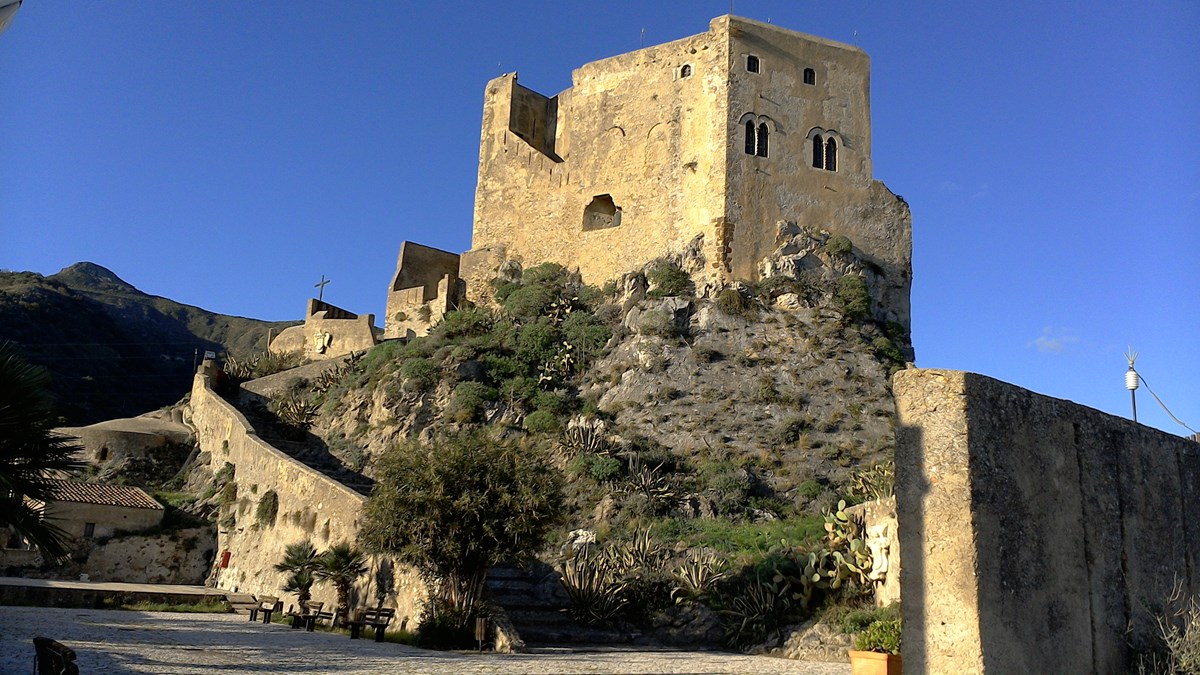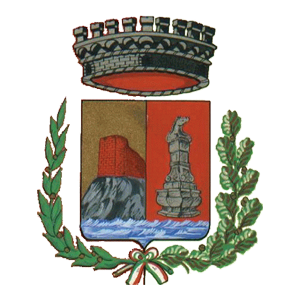Castello Rufo Ruffo

Arroccato sul punto più alto della rupe, di cui ne asseconda le asperità naturali, il Castello voluto da Federico II di Svevia nel XIII Sec, domina il panorama circostante. Il massiccio impianto trapezoidale e l’elevata verticalità delle pareti sono alleggeriti dalle eleganti bifore che si aprono sui vari prospetti mentre all’interno troviamo ampie sale bene illuminate con alte volte a botte, per cui, più che una cupa e minacciosa fortezza, richiama un “Dongione”, residenza elegante e sfarzosa del Feudatario. Sul lato orientale la fortezza avanzata dove, nel ‘600 vennero installate numerose bocche da fuoco che resero invulnerabile la costa. Luogo privilegiato, ricco di storia e di avventure, vide le gesta di personaggi di notevole spessore come la baldanzosa Macalda da Scaletta o l’Imperatore Carlo V che vi sostò nel 1535. Nell’atrio un’antica costruzione segna il basamento di una torre preesistente. Purtroppo il Castello non è stato risparmiato dagli attacchi del tempo nonché dell’incuria degli uomini e ne reca i segni evidenti. Nel 1969 il Principe Ruffo lo dona al Comune. Negli anni’80 a cura della Soprintendenza e del Comune è stato avviato un restauro accurato.
The Castle Rufo Ruffo
The Castle Perched on the highest point of the cliff, set harmoniously in its naturally uneven contours, the Castle, which was the idea of Frederick II of Sweden in the XIII Century, dominates the surrounding landscape. The solid trapezoidal shape and the height of its walls are somewhat softened by the elegant mullioned windows that open onto the various views while inside we find, big, well illuminated rooms with high barrel vaults that seem more like a “Dongione”, the elegant and sumptuous residence of the Feudal Lord, rather than a gloomy and threatening fort. The fort projects on the eastern side where, in ‘600. a great number of cannons were placed that made the coast unassailable. This is a privileged place, rich in history and adventure which saw the actions of many a great man like, for instance, the daring Macalda da Scaletta or the Emperor Charles V who stayed there in 1535. An antique construction in the atrium marks the base of a tower that used to be there. Today the Castle shows the obvious signs of the attacks of those times as well as the neglect of man. In 1969 Prince Ruffo gave it as a gift to the Municipality with the condition it would be used for cultural purposes. Restoration work commenced in the 80s, seen to by the Head of the Monuments and Fine Arts Service and the Municipality.
Das Schloss Rufo Ruffo
Das von Federico II, von Schwaben im 18.Jh. gewollte Schloss liegt ganz oben auf einem Felsen, dessn naturlicher Harte es sich anpasst, und dominiert das umliegende Panorama. Der massive trapezförmige Grundriss und die steile Vertikalität der Wände werden durch elegante zweibogige Fenster erleichtert, die verschiedene Ausblicke bieten. Im Schlossinnern finden wir helle Säle mit hohen Tonnengewölben, die weniger an eine trostlose und bedrohliche Festung, sondem viel mehr an den eleganten und prunkvollen Wohnsitz des Lehnherrn, eben an einen “Dongione” erinnern. Auf der Ostseite befindet sich der Festungsvorsprung, wo im 17. Jh. zahlreiche Geschütze installiert wurden, die die Küste unverwundbar gestalteten. Dieser privilegierte Ort. reich an Geschichte und Abenteuer, war Zeuge der Machenschaften wichtiger Persönlichkeiten, wie die der kecken Macalda da Scaletta oder des Herrschers Karl V., der sich 1535 hier aufhielt. Eine antike Konstruktion im Atrium baut auf dem Fundament eines früheren Turms auf. Leider haben die Zeit und die Nachlässigkeit des Menschen am Schloss augenscheinliche Spuren hinterlassen. Im Jahr 1969 schenkt der Fürst Ruffo das Schloss unter der Voraussetzung, es einer kulturellen Zweckbestimmung zuzuführen. der Gemeinde und in den 80er Jahren beginnt auf Veranlassung der Oberintendanz und der Gemeinde seine sorgfältige Restauti
Orario apertura castello mese dicembre 2023: Sabato e Domenica ore 10,00-13,00
